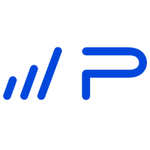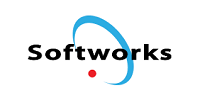Description

Cisco ISE

VAX access control
Comprehensive Overview: Cisco ISE vs VAX access control
Cisco Identity Services Engine (ISE) and VAX Access Control are both solutions in the area of network security and access control, but they serve different segments and have different capabilities. Here's a comprehensive overview of both:
Cisco Identity Services Engine (ISE)
Primary Functions and Target Markets:
-
Network Access Control (NAC): Cisco ISE primarily provides network access control solutions. It ensures that only authorized and compliant devices can access network resources, maintaining a secure network environment.
-
Policy Enforcement: It allows for the creation and enforcement of security policies across both wired and wireless networks.
-
Visibility and Profiling: ISE provides visibility into the devices and users on the network, profiling them to apply appropriate access controls and monitor them continuously.
-
Guest Access: Facilitates secure guest access with customizable guest portals and access workflows.
-
BYOD Management: Supports bring-your-own-device (BYOD) initiatives by providing secure access to personal devices.
-
Target Market: Large enterprises, educational institutions, and organizations with complex network architectures.
Market Share and User Base:
-
Market Share: Cisco is a significant player in the NAC market. Cisco ISE is considered a leader in the network access control solutions market due to its comprehensive features and integration capabilities with other Cisco products.
-
User Base: It enjoys a large user base, primarily within large enterprises, government sectors, and educational institutions, where managing a large number of devices and users is essential.
Key Differentiating Factors:
-
Integration: Cisco ISE integrates seamlessly with other Cisco network and security products, enhancing its functionality and appeal for existing Cisco environments.
-
Comprehensive Feature Set: Offers a wide array of features beyond basic access control, including profiling, posture assessment, and threat containment.
-
Scalability: Ideal for very large networks, capable of handling numerous devices and users.
VAX Access Control
Primary Functions and Target Markets:
-
Physical Access Control: VAX is primarily a physical access control system. It manages access to physical spaces within facilities, such as doors and secure areas, using various authentication methods like keycards, biometrics, or PINs.
-
Security Management: Provides management and monitoring of entry points and integrates with video surveillance systems for enhanced security.
-
Scalability and Flexibility: Includes flexible credential options and scalable architecture to support from small facilities to large corporate campuses.
-
Target Market: Small to medium-sized enterprises, corporate offices, healthcare facilities, and other organizations needing robust physical security solutions.
Market Share and User Base:
-
Market Share: VAX Access Control is less prevalent than Cisco ISE in its respective market, as the access control space is vast with numerous competitors offering various solutions.
-
User Base: More commonly found in small to medium enterprises and organizations focusing on physical security, with a significant presence in sectors that require controlled physical access.
Key Differentiating Factors:
-
Focus on Physical Security: Unlike Cisco ISE, VAX is dedicated to physical access control, managing and securing physical entry points.
-
Ease of Use: Typically offers user-friendly interfaces and streamlined deployment, making it accessible for organizations without extensive IT resources.
-
Cost-Effective: Often considered more cost-effective for smaller organizations compared to larger, feature-heavy solutions like Cisco ISE.
In summary, Cisco ISE and VAX Access Control serve distinct needs within the realm of security—network access and physical access, respectively. Cisco ISE is a robust solution aimed at managing network access and device compliance in large scale IT environments, while VAX Access Control focuses on physical security, managing entry to physical spaces rather than networks.
Contact Info

Year founded :
Not Available
Not Available
Not Available
Not Available
Not Available

Year founded :
Not Available
Not Available
Not Available
Not Available
Not Available
Feature Similarity Breakdown: Cisco ISE, VAX access control
When comparing Cisco Identity Services Engine (ISE) and VAX Access Control (assuming VAX is a representative of access control systems, as VAX could also refer to something else), it's essential to look at their core features, user interfaces, and any unique attributes they might have. Here's a general breakdown based on these aspects:
a) Core Features in Common
-
Access Control: Both Cisco ISE and VAX Access Control provide robust access control solutions. They help in securing network access and managing permissions for users and devices.
-
Authentication: Both systems support various authentication methods, including 802.1X, RADIUS, and TACACS+ for verifying user identities.
-
Authorization: Both solutions offer policy-based authorization, allowing administrators to define who has access to specific networks or resources.
-
Accounting: They can track user activities and resource access for auditing purposes.
-
Profiling: Device and user profiling are integral, helping in identifying and classifying connected devices for policy enforcement.
-
Integration with Directory Services: Both can integrate with directory services like Active Directory for user authentication and management.
-
Guest Access Management: They offer features for managing guest access, ensuring that temporary users adhere to defined security policies.
-
Reporting and Compliance: Tools for compliance reporting, which are necessary for auditing and ensuring adherence to regulatory standards.
b) User Interface Comparison
-
Cisco ISE:
- The Cisco ISE interface is comprehensive and may initially appear complex due to its wide range of features.
- Provides web-based access with a dashboard that summarizes key status information and alerts.
- Offers detailed navigation for specific functions like policy management, reporting, and troubleshooting.
- Known for its integration with other Cisco security products, which can streamline management for Cisco-centric networks.
-
VAX Access Control:
- Typically, access control systems like VAX would have a more straightforward user interface focusing on physical security controls.
- Interfaces are designed to be intuitive for managing physical access rights and monitoring access logs.
- May not have as extensive network security configuration options as Cisco ISE, focusing more on managing credentials and access points.
- Usually offers both desktop and web-based management interfaces.
c) Unique Features
-
Cisco ISE:
- Network Visibility and Segmentation: Cisco ISE is known for providing deep visibility into network environments and enabling network segmentation.
- Advanced Threat Containment: Integration with Cisco's broader security solutions allows for enhanced threat detection and automatic threat responses.
- Centralized Policy Management: Offers unified policy management and enforcement across a wide range of network environments.
- BYOD Support: Provides specific features for onboarding and managing BYOD (Bring Your Own Device) environments.
-
VAX Access Control:
- Physical Security Integration: VAX systems are generally more specialized in integrating with physical security infrastructure, like door locks, biometric scanners, and surveillance systems.
- Scalability for Physical Locations: Designed to scale efficiently across multiple physical locations, supporting large campuses or enterprise facilities.
- Emergency Response Features: Many access control systems include specific functionalities for emergency scenarios, like lockdown procedures or emergency notifications.
In summary, while both systems offer access control features, Cisco ISE is more focused on network security and integration, while VAX Access Control would be more oriented towards physical access management. Each has its strengths depending on whether the focus is network or physical security.
Features

Identity Management
Security
User Experience
Access Control
System Integration
Security Enforcement
Guest Access Management
Identity Management and Control
Network Visibility
Integration and Scalability

Access Control
Monitoring and Reporting
User Management
Integration
Best Fit Use Cases: Cisco ISE, VAX access control
Cisco Identity Services Engine (ISE) and VAX access control are both powerful tools designed to provide security through comprehensive access control solutions. Here's a detailed look at the best fit use cases and target scenarios for each:
Cisco Identity Services Engine (ISE)
a) For what types of businesses or projects is Cisco ISE the best choice?
-
Large Enterprises and Corporations:
- Cisco ISE is ideal for large organizations with complex network infrastructures. It can handle a high volume of devices and users, providing centralized management and identity-based access control.
-
Multi-Location Businesses:
- Companies with multiple branches or locations can benefit from Cisco ISE’s ability to provide consistent security policies and seamless user experience across different sites.
-
Industries with Compliance Requirements:
- Sectors like finance, healthcare, and government often have strict compliance and regulatory needs. Cisco ISE helps ensure compliance with standards like HIPAA, PCI DSS, and others by providing robust security measures.
-
Organizations Looking to Implement Zero Trust Architecture:
- Cisco ISE supports Zero Trust by ensuring that every access request is authenticated, authorized, and encrypted, thus providing a secure environment.
-
Educational Institutions:
- Universities and colleges with a high density of users and devices can use Cisco ISE to manage and authenticate their network access efficiently.
-
Businesses Implementing BYOD Policies:
- With capabilities to handle Bring Your Own Device (BYOD) scenarios, Cisco ISE is well-suited for companies allowing employees to use personal devices for work.
VAX Access Control
b) In what scenarios would VAX access control be the preferred option?
-
Small to Medium-Sized Enterprises (SMEs):
- VAX is often more cost-effective for smaller organizations that need robust physical access control without the complexity of managing large IT networks.
-
Physical Security Focused Businesses:
- Companies that prioritize securing physical premises, like office buildings, warehouses, or secure facilities, can greatly benefit from VAX’s streamlined access control solutions.
-
Retail and Hospitality Sectors:
- Businesses in retail and hospitality with a high turnover of staff and customers can use VAX for simple, effective, and adaptable access management.
-
Industries with Frequent Personnel Changes:
- Sectors like construction or temporary projects where employees frequently change can benefit from the ease of updating and managing access credentials with VAX systems.
-
Projects with a Limited IT Framework:
- Environments where IT resources and infrastructure are limited might find VAX’s localized and simplified system more manageable.
d) How do these products cater to different industry verticals or company sizes?
-
Cisco ISE:
- Scalability: It caters to large enterprises by offering solutions that scale well across vast and complex networks.
- Customization and Integration: ISE integrates with other Cisco products and third-party solutions, allowing businesses to tailor its use to specific industry needs, whether it’s healthcare compliance or advanced retail analytics.
- Security Focused: Its ability to enforce identity-based access policies serves industries with stringent security requirements.
-
VAX Access Control:
- Affordability and Simplicity: Its cost-effective nature and straightforward deployment appeal to smaller businesses or sectors where IT sophistication is secondary to physical security.
- Adaptable Physical Security: Offers flexibility in managing access, which can be particularly useful in retail, hospitality, or other service-based industries.
- Minimal IT Dependency: By reducing the need for extensive IT support, VAX caters to businesses without robust internal IT capabilities, making it easier for them to maintain secure access controls.
Each solution has distinct strengths that address specific needs across different business sizes and industry verticals, making them suitable for their respective scenarios.
Pricing

Pricing Not Available

Pricing Not Available
Metrics History
Metrics History
Comparing undefined across companies
Conclusion & Final Verdict: Cisco ISE vs VAX access control
Conclusion and Final Verdict: Cisco ISE vs. VAX Access Control
When it comes to selecting between Cisco Identity Services Engine (ISE) and VAX Access Control, the decision largely depends on the specific needs and requirements of an organization. Both products have their strengths and weaknesses, and the best choice will rely on the organizational priorities, whether they lean towards a focus on network security, user management, or physical security.
a) Best Overall Value
Cisco ISE generally provides the best overall value for organizations that require robust network access control (NAC), detailed policy enforcement, and seamless integration with network devices. It’s best suited for environments where the emphasis is on network security, identity management, and compliance.
VAX Access Control, on the other hand, offers value particularly to those that require sophisticated physical access control systems. It is ideal for industries where managing physical access and integrating with security systems is critical.
b) Pros and Cons
Cisco ISE:
Pros:
- Comprehensive network access and security management.
- Strong integration capabilities with existing Cisco infrastructure.
- Advanced threat intelligence and posture assessment.
- Scalable for large enterprise networks with complex needs.
- Good support for endpoint compliance and guest access management.
Cons:
- Higher cost, both in terms of licensing and deployment.
- Can be complex to implement and configure, requiring a higher level of IT expertise.
- Requires a solid understanding of Cisco's networking environment.
VAX Access Control:
Pros:
- Focuses on physical security, offering robust access control features.
- Easier to deploy and use for small to medium-sized businesses.
- Cost-effective for organizations primarily concerned with controlling physical access.
- Scalable solution with integration options for other physical security systems.
Cons:
- Limited in terms of network access control and cybersecurity features.
- May require additional systems for comprehensive security beyond physical access.
- Integration with existing IT infrastructure might be less seamless compared to dedicated network solutions.
c) Recommendations
For organizations evaluating these options, consider the following recommendations:
-
Define Your Priorities: Determine whether your primary concern is network security and identity management (in which case Cisco ISE is likely superior) versus physical access control and security (where VAX might be preferable).
-
Consider Integration Needs: Assess how well each system integrates with your current infrastructure. Organizations with heavy investments in Cisco infrastructure may find Cisco ISE a more compatible choice.
-
Evaluate Resource Constraints: Smaller organizations or those with limited IT resources might find VAX easier and more cost-effective to deploy and manage, whereas Cisco ISE might require more substantial investment in terms of both money and expertise.
-
Scalability and Future Growth: Think about your organization’s growth trajectory. Cisco ISE is an excellent choice for organizations anticipating significant growth and the need for scalable security solutions.
-
Consult with Stakeholders: Engage with both IT and physical security teams to gather input on the specific needs and challenges they face. This collaborative approach can ensure a more holistic decision.
Ultimately, the best choice will align with the organization’s specific security objectives, budget, and existing infrastructure, emphasizing either comprehensive network security or robust physical access control.
Add to compare
Add similar companies



